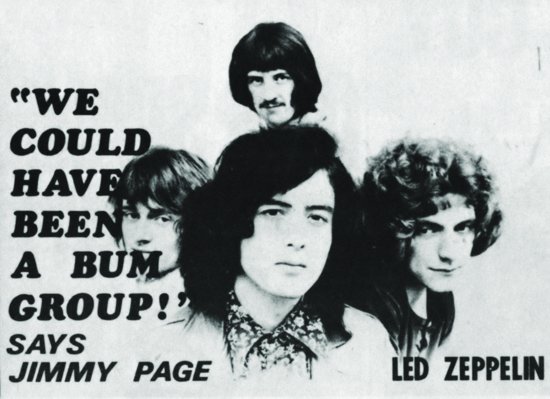PART 2
In the Light
Led Zeppelin's first rehearsal in Soho was instant karma and instant camaraderie. The four men tore through Johnny Burnette and the Rock and Roll Trio's “Train Kept a-Rollin' '' and Garnet Mimms's “As Long as I Have You” and then grinned at one another in delight.
Funded by the savings of Page, Jones, and Peter Grant, the band fulfilled old Yardbirds commitments in Scandinavia and then recorded a devastatingly powerful album of the blues (“You Shook Me”) and proto-heavy-metal songs (“Dazed and Confused”) they'd worked up on the road. Grant—also managing the similarly proto-metal Jeff Beck Group—flew to New York with his golden boy Page and secured an unprecedentedly generous deal with legendary Atlantic Records.
By mid-1969, Led Zeppelin were routinely blowing heavy headliners off the stage with their unholy fusion of funk, guitar riffology, and hair-raising emotion. Grant focused almost exclusively on North America and soon had his charges topping bills from Texas to California, a state that became their U.S. home away from home. Despite a remorseless touring schedule, they squeezed in enough sessions to make the steamroller album that was Led Zeppelin II (1969), kicked off by the chest-pummeling single “Whole Lotta Love” but also boasting the beauteous, Tolkien-inspired “Ramble On.” Critics scented a hype and condemned Zeppelin as proponents of mere power, but young boys understood and quickly adopted the band as their preferred British import.
Record Mirror, April 12, 1969.

To prove their versatility, Zeppelin in 1970 made a third album that was equal parts electric thunder (“Immigrant Song”) and strumming folkiness infused with the spirit of Plant's beloved Welsh mountains (“That's the Way”). Wonderful as it was, Led Zeppelin III only confused matters for critics and fans, who took more warmly to the untitled 1971 fourth album, Zeppelin's best-ever seller. Even Rolling Stone gave a thumbs-up to the pile-driving “Black Dog” and the medieval prog-rock epic “Stairway to Heaven.”
By Houses of the Holy (1973)—the group's most diverse, most carefully arranged, and most underrated album—Zeppelin were on top of the world. A show in Tampa, Florida, drew a record-breaking rabble of more than fifty-five thousand delirious disciples, eclipsing the Beatles' 1966 show at Shea Stadium.